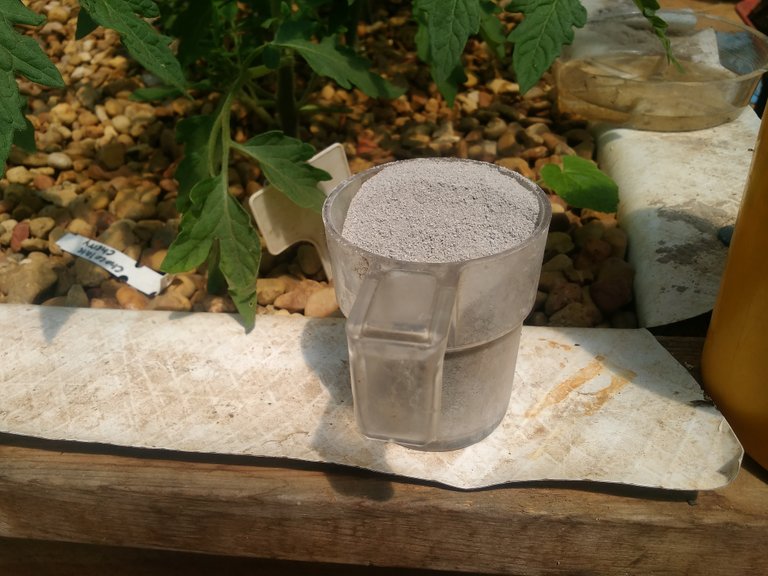Quick Tip #2
Use Calcium Carbonate to buffer your pH.
Add a cup of calcium carbonate if your system pH drops below 7. The calcium will slowly dissolve into the water and prevent the dreaded anaerobic condition.

And it adds calcium into the water to promote healthy fish and plants. Read more about this in my water chemistry post. Add it to the system in the clay pot from tip #1.
Could you just keep a few big chunks of limestone in the tank instead?
I went and did a little digging on the lime stone as you asked.. I found that it can create calcium hydroxide or what is sometimes called Slaked Lime.
Calcium hydroxide (traditionally called slaked lime) is an inorganic compound with the chemical formula Ca(OH)2. It is a colorless crystal or white powder and is obtained when calcium oxide (called lime or quicklime) is mixed, or slaked with water.
depending on the levels of lime it can be toxic to the fish. I would be concerned that over time the limestone would dissolve into the solution and burn the fish gills.
Limestone is calcium carbonate. If you heat it up hot enough it will decompose into calcium oxide (lime), which will absorb water from the atmosphere to make calcium hydroxide (slaked lime). After years and years, the calcium hydroxide will reabsorb carbon dioxide to reform calcium carbonate (limestone).
I was thinking that you might be able to put a single big block of limestone in the tank that would very slowly dissolve and reduce the number of calcium carbonate additions you needed to make.
@makinstuff just found out what happens if you put way too much calcium carbonate in the system. His aircrete was dissolving too quickly and pushing up the pH too much.
Limestone is not as porous as fresh aircrete, so it will dissolve more slowly. It would also be pretty easy to just pull it out of the tank if it keeps the pH too high.
I have had lime stone in my system before.. It makes the PH uncontrollable.
Your welcome to try it if you want, personally I will stick with the calcium carbonate. The inconvenience of having to add the calcium carbonate once a month is not worth the hassle of constant water replacements trying to use lime.
I have used powdered lime before and the limestone. Neither worked for me..
It's been my experience that limestone dissolves at a faster rate than calcium carbonate. I certainly don't claim to be all knowing on this subject, I can only tell you what I have observed through years of trial and error.
If you think one will be better than the other, then do the vinegar test, or something similar, on samples of each. That way you can make your own conclusions through your own experimentation..
Actually it was the aircrete and the limestone creating the problem in his system. And that air Crete was even covered with flex seal, and still found a way to leach into the water..
Provided he did what I told him to do then he never added the calcium carbonate but rather had it on hand to add to the water when the system flips back to the acidic side from CO2 Respiration.
Also, as far as I'm aware, calcium carbonate is ground up sea shells.
I haven't had much luck with limestone. It's always been a temporary fix at best for me. And on top of that it doesn't add the calcium.
For more information check out the follow up post on this subject.
There are multiple forms of calcium carbonate.. Thank you @professorbromide for bringing this tip into a full blown subject discussion..
Tilapia. but hey you can feed your chickens calcium carbonate if you want..